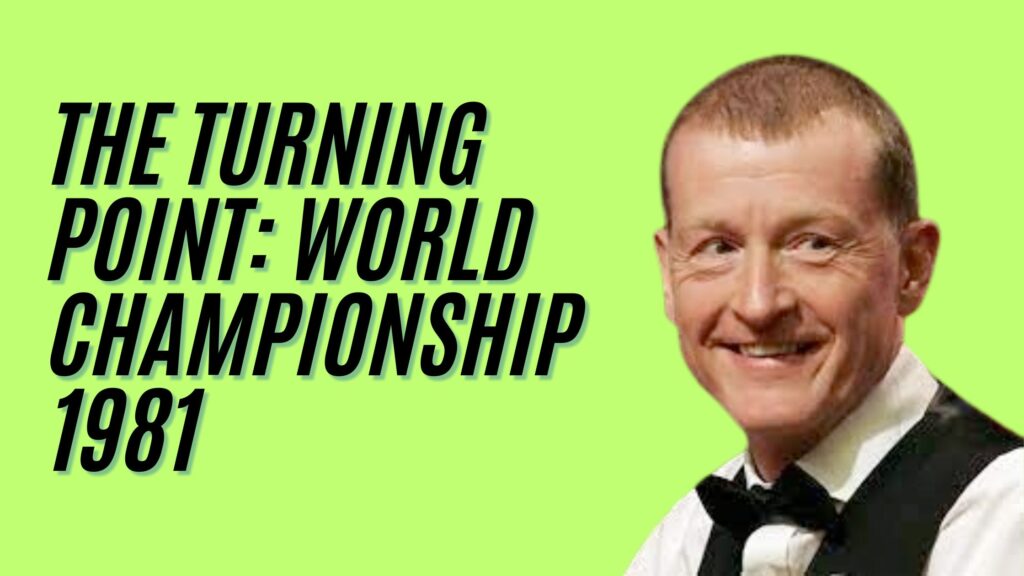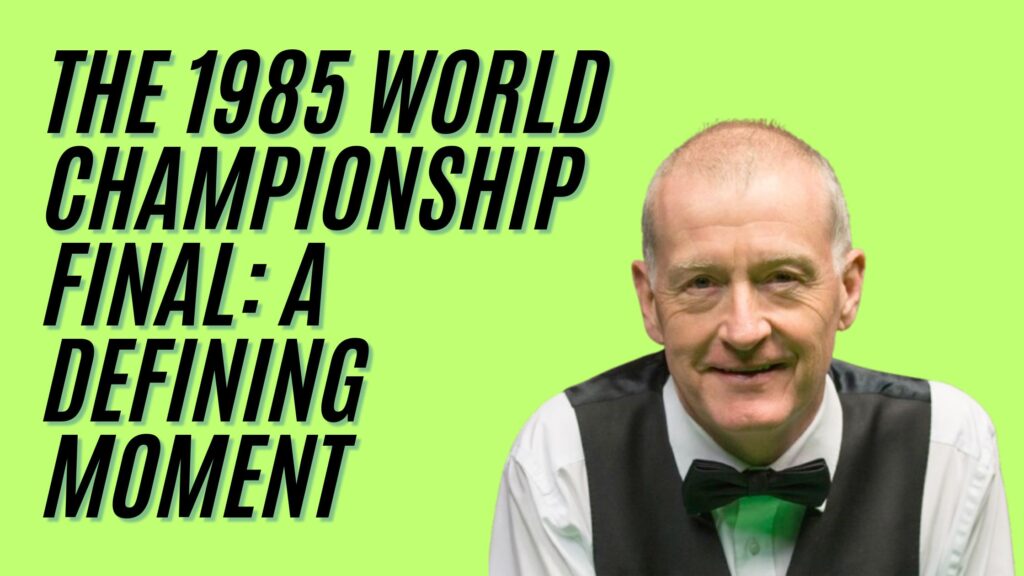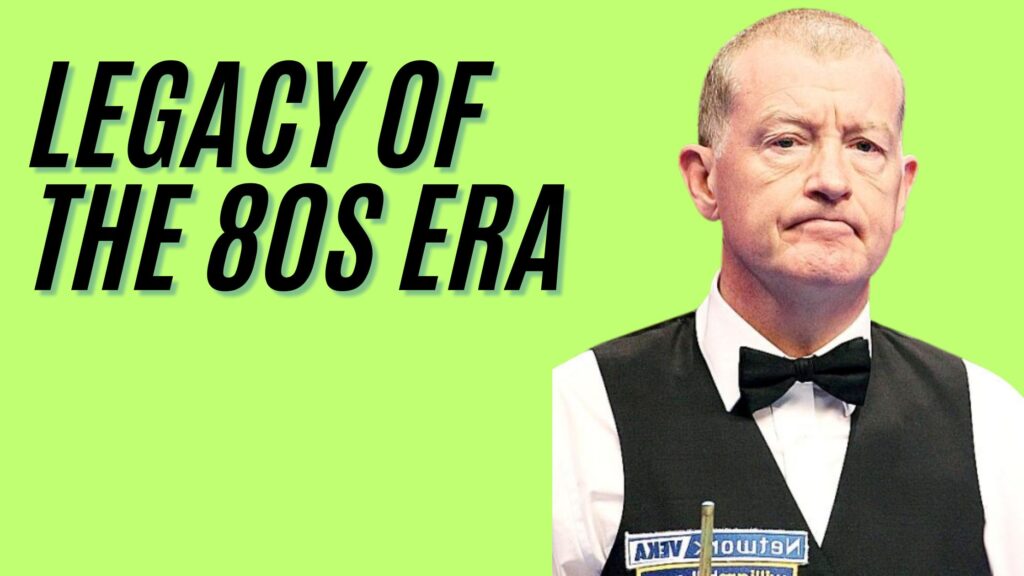
Introduction
When you think of the golden era of snooker, one name shines brighter than the rest—Steve Davis. Often hailed as the game’s first true professional, Davis didn’t just win titles in the 1980s—he revolutionized the sport. With his calm demeanor, surgical precision, and relentless hunger for victory, Davis dominated snooker like no one before him. The 1980s belonged to Steve Davis, and his reign defined what it meant to be the best in the sport.
In this article, we’ll take a deep dive into how Steve Davis ruled the 80s, year after year, rival after rival, becoming a living legend in the world of snooker.

1. Early Life and Rise to Stardom
Born on August 22, 1957, in Plumstead, London, Steve Davis grew up in a working-class family. Introduced to snooker by his father, Bill Davis, who was a keen amateur player, young Steve quickly took to the game. By the time he was in his teens, he was already studying the greats and practicing relentlessly.
His career took a pivotal turn when he met Barry Hearn, a sports promoter who would become his long-time manager and close friend. Hearn saw Davis not just as a player, but as a brand. This partnership would redefine sports management and turn Davis into the poster boy of snooker.
Turning professional in 1978, Davis didn’t take long to make his mark. His analytical approach and unmatched discipline made him stand out in a field that was often known for flamboyant characters and unpredictable performances.

2. The Turning Point: World Championship 1981
Steve Davis’s rise from promising professional to global snooker icon began in earnest in 1981, when he won his first World Championship title. He defeated Doug Mountjoy 18–12 in the final at the Crucible Theatre in Sheffield—a venue that would become his personal arena of conquest throughout the decade.
This victory was more than just a trophy—it was a signal to the snooker world that a new era had begun. Davis wasn’t here to make up the numbers. He was here to dominate.

3. Consistency and Total Domination (1981–1989)
Throughout the 1980s, Steve Davis didn’t just win; he rewrote the standards of consistency and excellence in snooker. Here’s a quick rundown of his incredible achievements during the decade:
World Championships:
- 1981 – First title, beating Doug Mountjoy
- 1983 – Victory over Cliff Thorburn
- 1984 – Dominant win against Jimmy White
- 1987 – Defeated Joe Johnson
- 1988 – Second title over Terry Griffiths
- 1989 – Final triumph of the 80s against John Parrott
UK Championships:
Won in 1980, 1981, 1984, 1985, 1986, 1987
Masters Titles:
- Triumphed in 1982, 1988
Davis also held the world number one ranking from 1983 to 1990, an unprecedented seven consecutive seasons, demonstrating his sustained excellence.
His tournament win percentage and frame dominance were unrivaled during the decade. He wasn’t just a great player—he was the standard against which greatness was measured.

4. The Rivalries that Defined the Era
Steve Davis’s path to greatness wasn’t without resistance. His success was forged in battles with some of the most charismatic and skilled players of his generation.
Steve Davis vs. Alex Higgins
The “Hurricane” Alex Higgins was Davis’s polar opposite—wild, emotional, and unpredictable. Their rivalry was not just about snooker; it was about personality, class, and ideology. Higgins represented the raw, rebellious spirit, while Davis embodied control and professionalism. Their encounters drew massive crowds and elevated the sport’s profile.
Steve Davis vs. Jimmy White
Jimmy White, the “People’s Champion,” was another frequent Davis adversary. White’s flair and risk-taking often clashed with Davis’s methodical approach. Their matches were thrilling and often heart-breaking—for White. Davis denied White on multiple occasions, including a key victory in the 1984 World Championship final.
Other Rivals
Names like Dennis Taylor, Terry Griffiths, and Tony Meo frequently stood across the table from Davis. These battles added to his legend, especially as he overcame diverse styles and personalities to stay at the top.

5. The 1985 World Championship Final: A Defining Moment
No discussion of Davis’s 1980s reign is complete without the legendary 1985 World Championship final against Dennis Taylor.
Billed as one of the most dramatic matches in snooker history, the final went down to the last black ball in the 35th frame. Over 18.5 million people watched the climax live on BBC—still a UK TV record for a post-midnight broadcast.
Davis lost that final, and despite the heartbreak, it became a defining moment in his career. It showed that even in defeat, he was the central figure of the sport. His grace in loss further enhanced his reputation as a true professional.

6. Steve Davis: The Face of Snooker in the 80s
By the mid-80s, Steve Davis was more than a snooker champion—he was a cultural icon. He appeared in video games like Steve Davis Snooker, was featured in TV ads, and even released a pop single!
He brought mainstream attention to snooker in a way no one else had. Kids looked up to him, adults respected him, and the media couldn’t get enough of him. Davis made snooker cool, competitive, and commercially viable.

7. Style of Play and Mental Fortitude
Steve Davis wasn’t flashy. He didn’t play to the crowd. But what he did offer was a masterclass in control, precision, and consistency. His playstyle was built on solid fundamentals:
- Impeccable cue action
- Intelligent shot selection
- Tactical superiority
- Steely mental focus
What separated Davis from others wasn’t just skill—it was his mental strength. He could absorb pressure, stay calm under fire, and perform with robotic efficiency when it mattered most.

8. Legacy of the 80s Era
The 1980s were more than Davis’s personal playground—they were the decade when snooker became a mainstream sport in the UK. And at the heart of it was Steve Davis.
His impact went beyond trophies:
- Elevated the game’s professionalism
- Inspired a generation of future players
- Proved that methodical, disciplined play could capture audiences
- Paved the way for future stars like Stephen Hendry and Ronnie O’Sullivan
His dominance turned the Crucible into the holy grail of snooker, and his style raised the sport’s technical and tactical bar.
9. Life Beyond the 80s
Although his dominance waned in the 1990s with the rise of Stephen Hendry, Steve Davis continued to play at a high level, reaching the World Championship final as late as 1989 and semi-finals into the 2000s.
Post-retirement, Davis transitioned effortlessly into punditry and commentary. His insightful analysis, calm delivery, and dry wit have made him a fan favorite in a new role.
He was awarded the MBE in 1988 and later the OBE in 2001 for services to snooker. Davis also indulged in passions outside snooker—such as music (progressive rock), poker, and even chess.
Conclusion
Steve Davis ruled the 80s with an iron cue. His reign wasn’t about drama—it was about dominance. In a sport filled with wild personalities and unpredictable results, Davis brought order, discipline, and a hunger for perfection. His approach redefined how snooker was played, watched, and respected.
From his six World Championships to his cultural relevance, Davis didn’t just win—he changed the game. And in doing so, he carved out a legacy that still echoes through the Crucible Theatre every April.
Even decades later, when fans talk about the greatest of all time, the conversation still starts—and often ends—with Steve Davis.
